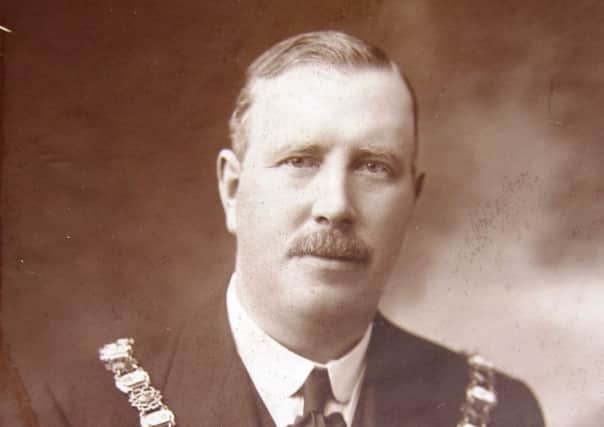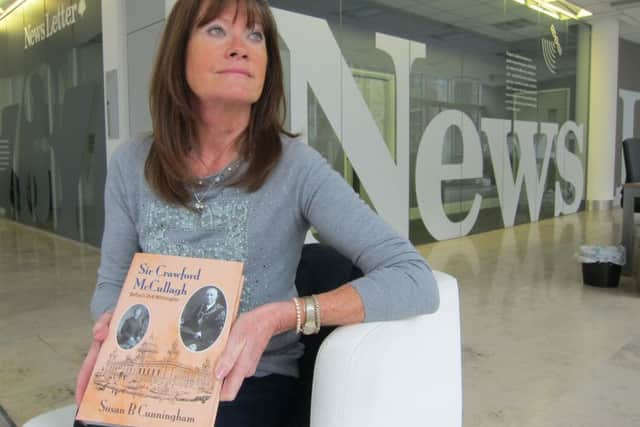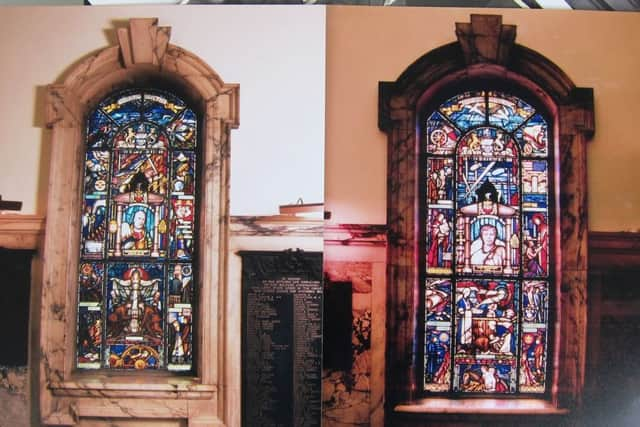Forgotten tale of farmboy who became record-breaking mayor


Author Susan B Cunningham has penned a portrait of the life of her great-grandfather, Sir Crawford McCullagh, who rose to be one of the most prominent politicians of early 20th century Belfast.
He was instrumental in developing parts of the city, and she told the News Letter that while his name may have receded into relative obscurity, it deserves to be “resurrected” for his contribution to the creation of Northern Ireland’s capital.
Advertisement
Hide AdAdvertisement
Hide AdThe book, ‘Sir Crawford McCullagh: Belfast’s Dick Whittington’, begins by noting the hardship of his rural upbringing.


Life involved rising at 6am and working on the farm until evening, at which point – “filthy and exhausted” – the family would dine and then assemble while their father read “a substantial passage from the Bible”.
Aged 13, he was taken on his first visit to Belfast, something which “had an indelible effect” on him – so much so that after his next birthday in 1882 he moved to the city to seek a new life (defying his father’s wishes to become either a clergyman or farmer).
He presented himself at Robertson, Ledlie and Ferguson department store in the city centre; a building that was formerly the home of the Bishop of Down and Connor, and outside which convicted criminals used to be executed (today it is a Primark).
There he was given a “job”, which actually paid nothing.


Advertisement
Hide AdAdvertisement
Hide AdInstead, the deal was he would get board and lodging during a five-year apprenticeship. He was successful, and by age 25 he had become the manager of a drapers’ business (by which time he had also already married, become a father twice, then suffered the death of his wife and both children, all of natural causes).
He remarried, and became an increasingly potent figure in the realm of commerce in the city. He also entered the political fray, becoming a city councillor in 1895 and joining the Ulster Unionist Council.
Soon after, he took charge of the city’s Improvement Committee – basically a slum clearance outfit, which replaced unsanitary dwellings with more modern homes with standard-sized back yards and access to gas.
He rose in influence and prestige, and among his stand-out achievements was arranging, during the inter-war years, for Belfast Castle to be taken into council hands.


Advertisement
Hide AdAdvertisement
Hide AdHe had been offered the castle to live in, but essentially declined, instead opting for it plus another 200 acres of land to be made public.
Soon after, again under Sir Crawford’s direction, the book states that another 8,000 acres of land were obtained at Cavehill – paving the way for the opening of the zoo, which happened in 1934.
In all, he stayed on the council for the best part of half a century, and served 17 years as the city’s lord mayor – making him, in the words of the book’s blurb, “the longest serving mayor in the United Kingdom”. He left public office in about 1946, and died in 1948 of lung cancer.
As to what Belfast owes him, Mrs Cunningham said: “A huge amount. I think he deserves to be resurrected, to be revalued, and respected for what he did for people.”


Advertisement
Hide AdAdvertisement
Hide AdAmong the remnants of the mark he left on Belfast are two stained glass windows honouring his name in Belfast City Hall, plus a portrait.
“But apart from that there’s nothing else,” she said.
Asked if he should be remembered alongside the likes of Charles Lanyon, whose architectural creations – such as Queen’s University, Crumlin Road jail and courthouse, the Customs House, and more – have helped make the city what it is today, she said: “Yes. Very few people nowadays, especially younger people, would ever have heard about him.
“[This book] should resurrect his memory and bring people up-to-date with a period in history that’s really, really, interesting. Because it’s not just about him. He shaped Belfast. It’s about the development of Belfast.”
‘PIONEER’ OF SILENCE TO HONOUR DEAD:
In her book, Susan Cunningham credits Crawford McCullagh with being a pioneer of the idea of using solemn silences as official tokens of respect for the dead.
Advertisement
Hide AdAdvertisement
Hide AdShe says the first recorded instance of such an “official moment of silence” was in Portugal in 1912.
In the UK, the formal adoption of a two-minute silence to remember the war dead occurred in 1919.
But, she added: “I think it can be held that Sir Crawford was the pioneer.”
In July 12, 1916, Lord Mayor McCullagh had asked that all business, courts and traffic in the city come to a halt between noon and 12.05pm in honour of the dead Ulster soldiers of the Great War.
Advertisement
Hide AdAdvertisement
Hide AdMrs Cunningham notes that “silence echoed through the streets of Belfast” as a result of his request.
DETAILS OF PUBLICATION:
Though Susan Cunningham had been aware of Crawford McCullagh since childhood, with the former lord mayor having featured in many family photos, she began researching and writing about him in earnest about 15 years ago – and declared herself “a bit overwhelmed” by the extent of his accomplishments.
Her book, published by Ballyhay Books in December, costs £20 and is available from The Ulster Historical Foundation, Easons, Gardiners, and Mount Stewart.